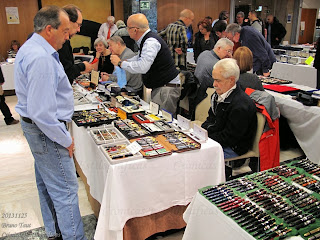This is, in fact, a totally different business. The South Korean Pilot Company (Pilot Pen Co.) is not operated by the Japanese counterpart (Pilot Corporation) but simply licensed the use of the Pilot brand. This license allows the commercialization of these South Korean products in Asian markets, but prohibits its sale in Japan.

Several Korean-made Pilot pens. On one of them, the company logo is the same Pilot used in Japan in the 1970s.
The Korean Pilots are, in principle, different to those made by the Japanese company, although both companies share some elements—converters, nib and feed designs, some logos… The Korean quality seems to be clearly lower.

This feed is very close --if not the same-- to those used by Pilot Japan in models like Prera, Cocoon/Metropolitan, Kaküno, etc.

The converter CON-20 is also used on Korean Pilot pens. Consequently, all Pilot converters and cartridges could also be used on those Korean-made pens, provided there was enough room inside the barrel.
There are, however, some better quality Korean Pilots. The Pilot Art Craft Silvern pen of the late 1960s had its counterpart in Korea. On the picture we see the very characteristic inlaid nib of said model clearly engraved as made in Korea.

This Art Craft Silvern had its original Korean nib, broken as we can see on the picture, replaced with another unit made in Japan.
This license scheme started in 1960 and is still active today. Pilot in South Korea has its headquarters in the city of Seongnam, in the outskirts of Seoul.
My thanks to Mr. Niikura and Mr. Sunami.
Platinum black pocket pen, manifold nib – Platinum Violet
Bruno Taut
Yokohama, January 5th, 2014
etiquetas: Corea del Sur, Pilot
Bruno Taut
Yokohama, January 5th, 2014
etiquetas: Corea del Sur, Pilot













































